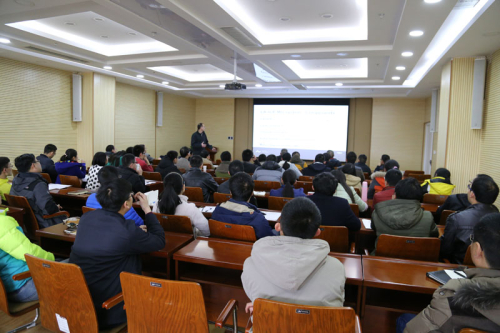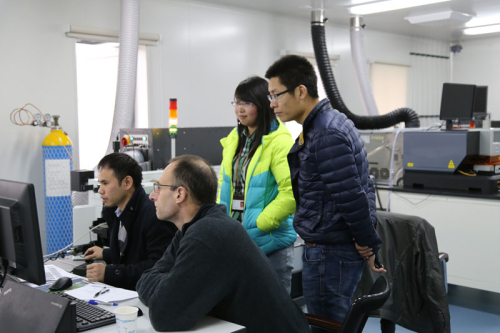Invited by the State Key Laboratory of Ore Deposit Geochemistry (SKLODG), Associate Prof. Thomas Ulrich from Aarhus University (Denmark) visited IGCAS during March 15th~18th, 2016.

Prof. Thomas Ulrich giving the presentation
On the afternoon of March 15th, Prof. Thomas Ulrich presented two talks entitled “Principles of LA-ICPMS” and “LA-ICPMS: Practical approach and applications”, respectively. In his talks, Prof. Thomas Ulrich firstly introduced the basic principles and analytical processes of the LA-ICPMS (Laser-ablation-Inductively coupled mass spectroscopy) in detail, and then illustrated the applications in U-Pb dating, major and trace elements analysis of silicates and fluid inclusions. His talks helped the audience with a better understanding of the developments and applications of the LA-ICPMS techniques. The talks attracted many IGCAS faculty and students and were appreciated by the audience.

Prof. Thomas Ulrich at the LA-ICPMS Lab in the SKLODG
During March 16th~18th, Prof. Thomas Ulrich visited the LA-ICPMS Lab in the SKLODG and performed some experiments. He discussed with the technicians and provided some excellent suggestions for improving the analytical methods.
Thomas Ulrich graduated from the ETH Zurich, Switzerland, and once worked in the Laurentian University, the Australian National University and the University of Queensland. He is currently an Associate Professor in the Aarhus University, Denmark. His research areas include ore forming processes, petrology and geochemistry of ore deposits, micro-analytical techniques, and material characterization and analysis of natural materials. He has published more than twenty papers, most of which were published on the important academic journals such as Nature、Economic Geology, Geochimica et Cosmochimica Acta, Geostandards and Geoanalytical Research and Ore Geology Reviews. One of the most important contributions of Thomas Ulrich is that he proved that Au and Cu could be concomitantly transported and precipitated and the ore-forming fluids were controlled by the crystallization process in an underlying magma chamber. This result was published on the Nature (Ulrich, T., et al., 1999. Gold concentrations of magmatic brines and the metal budget of porphyry copper deposits. Nature, 399: 676-679).
(By LAN Tingguang)